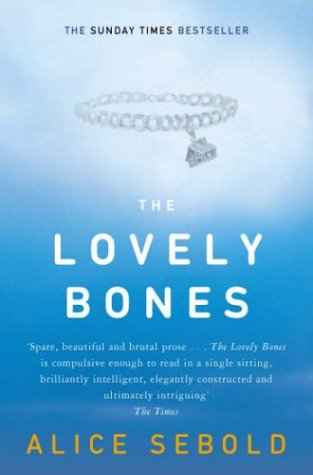All Nonfiction
- Bullying
- Books
- Academic
- Author Interviews
- Celebrity interviews
- College Articles
- College Essays
- Educator of the Year
- Heroes
- Interviews
- Memoir
- Personal Experience
- Sports
- Travel & Culture
All Opinions
- Bullying
- Current Events / Politics
- Discrimination
- Drugs / Alcohol / Smoking
- Entertainment / Celebrities
- Environment
- Love / Relationships
- Movies / Music / TV
- Pop Culture / Trends
- School / College
- Social Issues / Civics
- Spirituality / Religion
- Sports / Hobbies
All Hot Topics
- Bullying
- Community Service
- Environment
- Health
- Letters to the Editor
- Pride & Prejudice
- What Matters
- Back
Summer Guide
- Program Links
- Program Reviews
- Back
College Guide
- College Links
- College Reviews
- College Essays
- College Articles
- Back
Lovely Bones by Alice Sebold
When Alice Sebold wrote Lovely Bones in 2002, not only was she telling a deep, heart felt story about the rape and murder of a 14 year old girl, Sebold was also sharing an experience that she herself was put through and now must cope with for the rest of her life. When you get an author like Alice Sebold who has previously won the American Booksellers Association Book of the Year Award as well as the Bram Stoker Award for First Novel, and who has had firsthand experience with rape and tragedy, the life changing novel Lovely Bones is born. There is no question that Lovely Bones is backed by passion and the understanding of what families go through when misfortune occurs. Being a victim of rape herself, Sebold was able to pull from previous events in her life, giving the characters life and a sense of realism, even though Susie, the main character in the novel, tells the story from Heaven. The reader can not pull themselves away from Sebold’s intriguing and unique view on tragedy, heartbreak, and passion in this masterpiece Lovely Bones.
Sebold tells the story from Susie’s grasping point of view as a soul able to see and hear almost everything. Choosing to write the novel from this omniscient point of view allows the reader to fully understand all the other characters’ unique reactions to Susie’s death. Following the tragedy, it is easy for the reader to relate to Susie’s younger sister, Lindsey, and how, “[her] body began to knot. She was working hard keeping everyone out, everyone” (Sebold 67).
Besides the colorful range of characters, the plot itself is very well written. The book begins on page one with the murder of 14 year old Susie Salmon. Her family and friends then spiral off, finding their own unique ways of dealing with the drama. Her father is most pro-active in searching for the killer. Lindsey, her younger sister, shuts herself off from the world, and her younger brother, Buckley, works to try and comfort their parents. A moment that stands out is when Buckley, “kissed [his] father’s cheek. Something so divine that no one up in heaven could have made it up; the care a child took with an adult” (Sebold 47). Sebold shines in her ability to show the resilient love a child has for a parent. All the relationships that Sebold portrays are well defined such as the relationship between Buckley and his father.
Susie’s character speaks informally to the reader, saying what she feels in her heart and giving the text emotion and passion. Sebold chooses a simple diction to portray the innocence and youth of Susie’s character. The settings, in the suburbs where her family and friends live as well as where she resides in heaven, are both very plain surroundings. This idea of simplicity is seen in the syntax as well. When describing an event, Susie doesn’t typically throw in very descriptive language. As Susie narrates her father’s meeting with the detective in charge her murder, she realizes, “How alike [her dad] and [Detective Fenerman] were. How very different” (Sebold 142). This simplicity leaves the reader wanting to read for more information and questioning what is to come.
Overall Lovely Bones is a masterpiece. A few points that might develop controversy, however, are Sebold’s portrayal of a few religious aspects. Some people will disagree with the way heaven is described as a place that looks not much different than your average town, and the fact that a soul from the dead can inhabit the body of someone still alive. This is a rather small detail, though, considering that the rest of the novel is filled with juicy plot and deep, emotional character development.
Similar Articles
JOIN THE DISCUSSION
This article has 0 comments.

